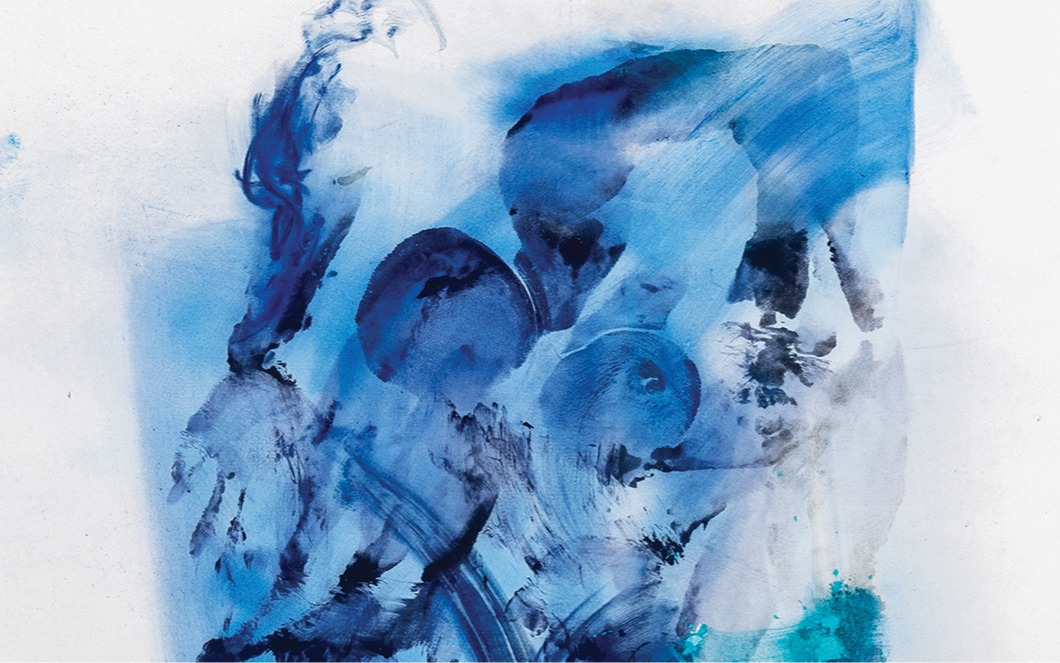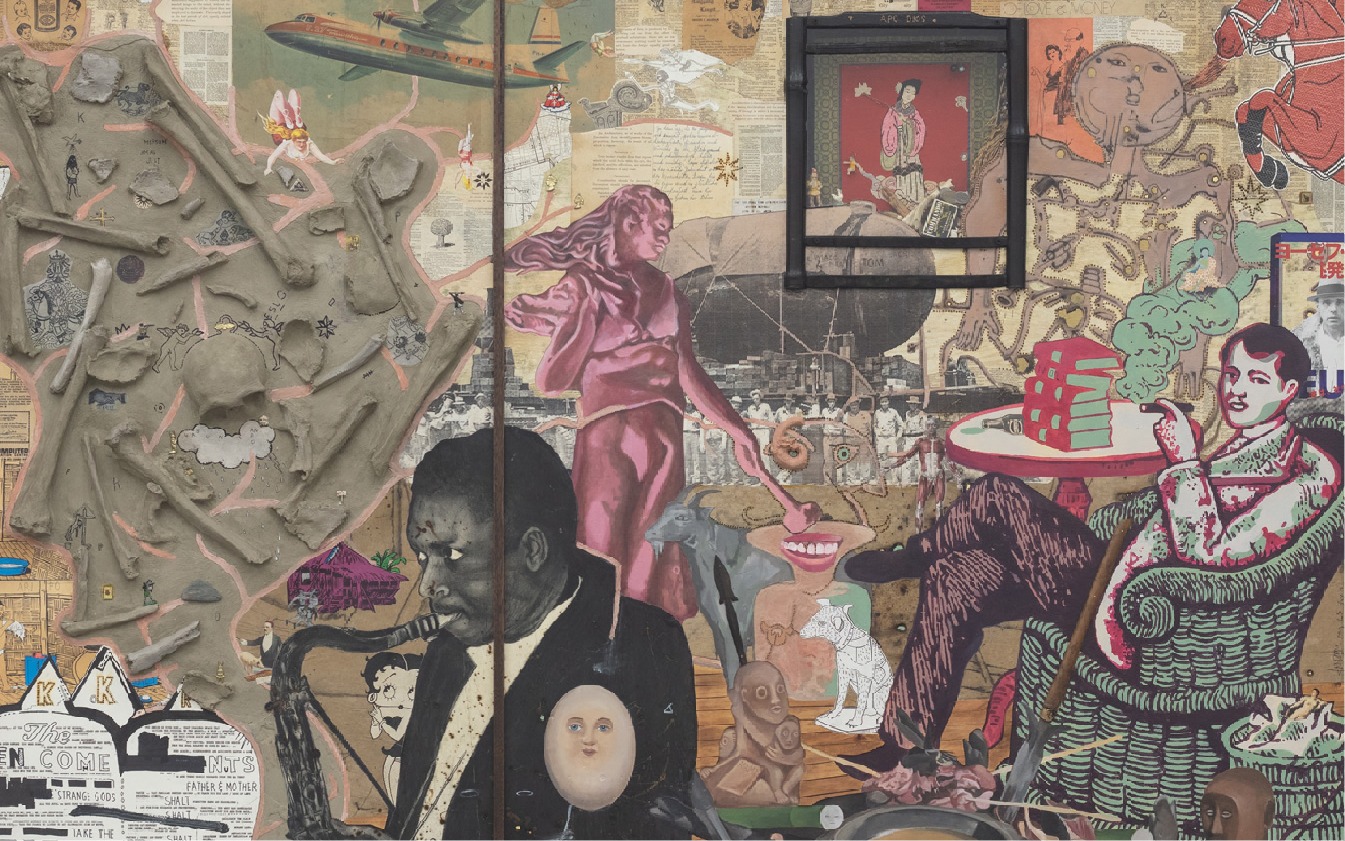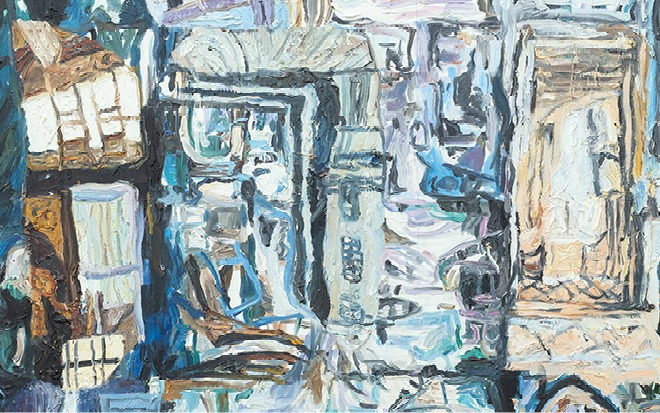
The Armory Show 2024
Tosh Basco, Kawayan de Guia, Keka Enriquez, Patricia Perez Eustaquio, Gregory Halili, Mit Jai Inn, Pow Martinez, Wawi Navarroza, Renato Orara
Javits Center, 429 11th Avenue, New York
About
Silverlens New York is pleased to announce its participation in The Armory Show 2024 from 5 to 8 September 2024, showcasing works by nine, mid-career Southeast Asian artists: Tosh Basco, Keka Enriquez, Patricia Perez Eustaquio, Kawayan de Guia, Gregory Halili, Mit Jai Inn, Wawi Navarroza, Renato Orara, and Pow Martinez. Through the presentation, the gallery aims to place these artists within the broader framework of the contemporary art dialogue, increasing global awareness and access to their works and histories.
Tosh Basco, acclaimed for her performances and movement-based works, rose to prominence in the San Francisco drag scene in the 2010s under the name boychild. She is the co-founder of the collaborative entity Moved by the Motion with Wu Tsang, and collaboration remains a vital aspect of her practice. Her series of “body drawings” uses oil and pigment to create physical and emotional compositions of her moving figure. These drawings emerge from the artist's attempts to transcribe her improvisational movement-based practice. Employing hues of blue reminiscent of the early photographic technique cyanotypes, Basco submerges herself in the medium to evoke a sense of motion and bodily intimacy. Basco’s showing at The Armory Show follows her feature in the exhibition Soft Fantasy / Hard Reality at Silverlens New York, on view from June to August 2024.
Keka Enriquez gained acclaim as one of the foremost artists of her generation in the Philippines during the 1990s, known for her evocative paintings that explored the psychological and social dimensions of home, identity, memory, and displacement. In 1998, she relocated to San Francisco and stepped away from the art world entirely, only to return to painting in 2023 after nearly a quarter-century. As a Filipino diasporic artist, Enriquez adopts a Neo-Expressionist style, challenging institutionalized conventions of gender, race, and citizenship, embracing a transcultural subjectivity to offer alternative perspectives in her work. Her new paintings showcase her evolved style—still tactile, sensuous, and bold, but with a newfound sense of looseness and freedom. Enriquez’s participation in The Armory Show follows her Viewing Room exhibition at Silverlens New York in May 2024 and precedes her upcoming solo exhibition at Silverlens Manila, opening in January 2025.
Alongside her solo exhibition at Silverlens New York, opening September 5, Patricia Perez Eustaquio’s mixed fiber textile works adorn the gallery’s booth at The Armory Show. In these works, Eustaquio merges the traditionally feminine language of textile with the historically masculine field of painting. In transforming meaning and historical contexts through tactile, familiar materials, the layered fiber works provide commentary on the mutability of perception. In addition to silk, cotton, and more, Eustaquio incorporates abaca, or Manila hemp, a plant native to the Philippines and a major trade commodity in the colonial era. Abaca fiber is both fine enough to be woven into fabric for clothing and tapestry and strong enough to be used for shipping cordage, as it has been for centuries—shipping ropes from Manila hemp were not only featured in the almost two hundred galleons built in various Philippine shipping yards and plied the Manila-Acapulco trade route, but also in the thousands of paraws, balangays, and other boats that generations of Filipinos used for trade and travel around the Asian seas.
Across his mixed-media works, Kawayan de Guia employs indigenous and colonial artifacts, playfully transforming them into lavish and often ironic critiques of consumerism, global trade, and the impact of the American occupation of the Philippines. By juxtaposing remnants of differing periods, meanings, and methods of production, de Guia unfolds the precarious narratives in which these objects come into being, and how they shape the complex social and political realities. In March 2025, Silverlens New York will present a duo-artist show with de Guia and Los Angeles-based artist Esteban Ramón Pérez.
Gregory Halili presents new “comet” assemblage sculptures. An avid collector, Halili utilizes findings from his vast inventory of both natural and man-made materials—altered by time and nature—which are then arranged and transformed into the comet’s blazing tail. Throughout the complex, layered body of his sculptures, Halili hides gem-like oil-on-shell miniature paintings. Reflecting on the essence and inevitability of change, Halili creates a dynamic assemblage of parts with layered meanings and rich symbols to form a greater, mysterious whole. Most recently, Silverlens New York presented a collection of Halili’s miniature paintings on capiz shells in January 2024.
Mit Jai Inn, the Chiang Mai-based pioneer of Thai contemporary art, showing at the upcoming 11th Asia Pacific Triennial (Queensland), creates distinctive color-based works in a densely layered, manually laborious, and physically rigorous practice. In this series of near-identical paintings, which the artist painted over and over again for a total of 50 canvases, Jai Inn abstractly references rice paddies, the patchwork of monks’ robes, and the colors of Thai temples. His Marking Stones will also be on display following their inclusion in his fall 2023 solo exhibition in New York. Equally renowned for his socially engaged work, which reflects an extension of his Thai Buddhism, the artist created functional baskets, stools, and lamps as part of a social installation in which visitors were encouraged to submit a “pledge for good” to enter a drawing for a chance to win these objects.
Born in Manila and moving between Manila, Madrid, and Istanbul, Wawi Navarroza is a leading figure in contemporary Southeast Asian art known for her large-format photographic tableaus and self-portraits. A transnationalist artist, Navarroza draws on her experiences to create in-studio bricolage images using a variety of materials, mise en scène, and her corporeal form to allude to the hybridity of identity, photography, and place. Of particular note is Navarroza’s Mouth of Pearls (2022), introducing culturally specific signifiers of Oriental exoticism—orchids, pearls, a silk kaftan—to co-opt and undermine the West’s harmful discourses and fetishization of the exotic Other.
Renato Orara’s seemingly literal hyper-realistic ballpoint pen drawings obfuscate the artist’s conceptual roots in intervention-based and public performance art in 1970s Manila. When returning to his practice in 1989 after an eight-year Zen meditation, Orara turned to pen and paper, filling blank pages with everyday objects. In isolating them from any context, meaning, or narrative and layering them with ink, the drawings ceased to be objects, surpassing the limits imposed by material constraints. The Armory presentation precedes Orara's momentous cross-continental exhibition, opening in the summer of 2025. This exhibition will unveil the artist's Entangled Pairs series, in which he pairs his object drawings together once they are created in sequence. The show will split the innately connected pairs across opposite sides of the globe, in simultaneous exhibitions at Silverlens’s galleries in Manila and New York. The show’s form embodies the physics phenomenon of quantum entanglement, where fundamental particles remain connected even at great distances from one another.
Pow Martinez’s practice spans painting, sculpture installations, and sound. His mischievous, playful narrative canvases resemble a beautiful nightmare, blending bold colors with demonic, mutant-like characters in his expressionistic, cartoonish style. Combining the mundanities of everyday life with elements of pop culture—often inspired by YouTube—the result is a comically distorted and satirical portrait of American hard- and soft-power in the Philippines, social media, culture, and the art market. The artist’s eponymous monograph, written by renowned contemporary art writer Tony Godfrey, was published by ArtAsiaPacific earlier this year.
TOSH BASCO
Tosh Basco she/her (b. 1988, Sacramento, USA; lives and works in Zürich, Switzerland) rose to prominence in the American West Coast drag scene. Well known for her movement-based performances under the name boychild, Basco’s photography and drawing accompany her performance practice. Viewed as a whole, Basco’s work attempts to enfold language, becoming, and representation together in spaces where they are presumed to exist as discrete entities.
She is the co-founder of the collaborative entity Moved by the Motion with Wu Tsang, and collaboration remains a vital aspect of her work. Basco’s institutional solo exhibitions include No Sky, Rockbund Art Museum, Shanghai (2023) and Grief Series, Karma International, Zürich (2021). Basco’s work has also been presented at the Venice Biennale; the Sydney Biennial; The Whitney Museum of American Art, New York; the Museum of Contemporary Art, Chicago; MOCA, Los Angeles; and ICA London, among other institutions.
KEKA ENRIQUEZ
Keka Enriquez (b. 1962, Manila, Philippines; lives and works in San Francisco, USA) is a distinguished contemporary artist celebrated for her experimental and expressionistic paintings. Influenced by the Neo-expressionist movement, Enriquez’s work is characterized by textured brushstrokes, bold colors, and innovative form. Renowned for her exploration of domestic interiors, traditionally the domain of women, Enriquez subverts the masculine art movement to delve into the psychological and social dimensions of home. Through her manipulation of pigment, texture, and surface, she retrieves and reshapes the multi-layered experience of the homescape while contemplating the significance of painting as a whole. After twenty-five years of working within her San Francisco community, Enriquez returned to the art world in 2023.
Enriquez embarked on her artistic journey in the 1980s under the mentorship of Roberto Chabet, widely acclaimed as the father of conceptual art in the Philippines. The artist graduated with a Bachelor of Fine Arts in Painting from the University of the Philippines. She has exhibited her work in the Philippines, the United States, England, Australia, Taiwan, Hong Kong, and Malaysia. In 1994, she was a recipient of the Cultural Center of the Philippines’ Thirteen Artists Award. Under a grant from UNESCO, she obtained her Masters degree in Fine Arts at the Norwich School of Art and Design, England in 1995.
PATRICIA PEREZ EUSTAQUIO
Patricia Perez Eustaquio (b. 1977, Cebu, Philippines; lives and works in Benguet Province, Philippines) is known for works that span different mediums and disciplines—from paintings, drawings, and sculptures, to the fields of fashion, décor, and craft. She reconciles these intermediary forms through her constant exploration of notions that surround the integrity of appearances and the vanity of objects. Images of detritus, carcasses, and decay are embedded into the handiwork of design, craft, and fashion, while merging the disparate qualities of the maligned and marginalized with the celebrated and desired. From her ornately shaped canvases to sculptures shrouded by fabric, their arrival as fragments, shadows, or memories, according to Eustaquio, underline their aspirations, their vanity, this ‘desire to be desired.’ Her wrought objects (ranging from furniture, textile, brass, and glasswork in manufactured environments) demonstrate these contrasting sensibilities and provide commentary on the mutability of perception, as well as on the constructs of desirability and how it influences life and culture.
Perez Eustaquio has gained recognition through several residencies abroad, including Art Omi in New York and Stichting Id11 of the Netherlands. She has also been part of numerous notable exhibitions, such as The Vexed Contemporary in the Museum of Contemporary Art and Design, Manila; That Mountain is Coming at the Palais de Tokyo in Paris, France; and An Atlas of Mirrors in the 2016 Singapore Biennale. She is a recipient of The Cultural Center of the Philippines’ Thirteen Artists Awards.
KAWAYAN DE GUIA
Kawayan de Guia (b. 1979 Baguio City, Philippines; lives and works in Baguio City) is an artist and curator whose practice spans painting, installation, and sculpture. His artworks use indigenous and colonial artifacts, playfully transforming them into lavish and often ironic critiques of consumerism, global trade and the impact of the American occupation of the Philippines.
De Guia draws upon a wide array of Filipino material culture including Jeepneys, Dangwa buses, jukeboxes, torpedoes, and Ifugao rice gods. By juxtaposing remnants of differing periods, meanings and methods of production, de Guia unfolds the precarious narratives in which these objects come into being, and how they shape the complex social and political.
In 2007, he received the prestigious Ateneo Art Award for his exhibition Incubator, which paid homage to his many artistic forebears. In 2012, the artist initiated AX(iS) Art Project, a biannual festival that engages curators and contemporary artists with local communities and artisans. Across five days, participants travel by bus along the Halsema highway between Baguio and Bontoc in northern Luzon, creating site-specific works that responded to the changing cultural fabric of the region. In 2014, he participated in Markets of Resistance, a collaborative art project that allowed members of the public to barter for artworks. De Guia’s De Liberating a Fall (2014) consisted of a large-scale Statue of Liberty mounted above Baguio City Public Market. The work interrogates the ‘liberating’ force of capitalism and the economic impacts of globalization on domestic workers and regional trade.
GREGORY HALILI
Gregory Halili (b. 1975, Manila, Philippines; lives and works in Manila) is an artist specializing in the intricate art of miniatures. He meticulously carves and paints mother-of-pearl shells, creating memento moris that capture contemporary concepts of memory, life, death, and cycles. Recently, he has broadened his practice to include miniature oil paintings. Transforming capiz shells into canvases, he delicately presses them to their most fragile state, nearly reaching the point of breaking. These thinned-down, glass-like pieces, featuring paintings of butterflies and moths on the reverse, offer a reflection on the intricate and fragile state of the environment and the future. After 25 years in the United States, he returned to the Philippines in 2013.
His work has appeared in numerous exhibitions and shows, including the John Michael Kohler Arts Center in Sheboygan, Wisconsin; The Butler Institute of American Art in Youngstown, Ohio; The Hammond Museum and Sculpture Garden in Salem, New York; Ayala Museum in Makati City; Jorge B. Vargas Museum at the University of the Philippines in Quezon City; West Gallery in Quezon City; Silverlens in Makati City and Nancy Hoffman gallery in New York. In 2016, Halili presented at the Singapore Biennale. Halili received his B.F.A. from the University of the Arts in Philadelphia.
MIT JAI INN
Mit Jai Inn (b. 1960, Buak Khang, Thailand; lives and works in Chiang Mai) is a prominent contemporary artist celebrated for his distinctive color-based artworks. Employing palette knives, hands, and fingers, Mit creates vibrant, densely layered pieces that defy conventional boundaries of painting, embodying both manual and optical labor.
Rooted in a rigorous physicality, his works serve as a channel for responding to aesthetic, social, and political contexts. His practice reflects a diverse range of histories, from traditional divisions between 'Western' and 'Eastern' painting to Thailand's shifting political landscape. Since returning to Thailand in 1992, Jai Inn has been involved in socially and politically engaged art campaigns. He was a co-founder of three non-institutional initiatives central to Thai art practice and discourse: Chiang Mai Social Installation, the Midnight University and The Land Foundation. In 2015, he founded Cartel Artspace in Bangkok, a gallery that gives free space to artists reflecting on the country and region's political history and current context. In 2017, he co-initiated the independent Bangkok Biennale.
His traveling institutional solo show Dreamworld was presented at Ikon Gallery (Birmingham), England, Jim Thompson Art Center (Bangkok), and MAIIAM Contemporary Art Museum (Chiang Mai) from 2021 to 2024. Mit Jai Inn’s work has been included in international solo and group exhibitions at TKG+ (Taipei), Kaohsiung Museum of Fine Arts (Kaohsiung), Mori Art Museum (Tokyo), and Palais de Tokyo (Paris). He has also participated in the Aichi Triennale in Japan, the 21st Biennale of Sydney, Cockatoo Island in Australia, the Singapore Biennale, and the Yokohama Triennale.
WAWI NAVARROZA
Wawi Navarroza (b. 1979, Manila, Philippines) is a Filipina lens-based artist. Recognized as one of the foremost names in contemporary Southeast Asian art, she is known for her vibrant large format photographic tableaus and self-portraits which allude to the hybridity of identity, photography, and place.
Born in Manila, with higher education in the West, and moving between Madrid and Istanbul, Navarroza draws upon her transnational experiences to create in-studio collages using a variety of materials, mise en scène, and herself. Informed by tropicality within the context of post-colonial dialogue and globalization, and conscious of her role as a female artist, Navarroza employs her corporeal form as an artistic medium. Her body of work serves as a testament to the various facets and stages of the women's narrative, portraying woman as creator.
Navarroza’s scenes and depictions emphasize the often overlooked power of symbolic allegory, folk memory, and imaginations of the exoticized “East” to create a rich visual lexicon of criss-crossing references and riddles. She champions textiles, ornament, domestic décor, the handmade, the mass-produced, the high-low, the vernacular and indigenous, as well as the cosmopolitan and the worldly. Captivated by the in-between, Navarroza blends the edges to define her signature tropical gothic.
Navarroza has received a number of awards such as the Asian Cultural Council Fellowship Grant New York, Lucas Artists Fellowship Award for Visual Arts San Francisco, Cultural Center of the Philippines’ Thirteen Artists Awards, Ateneo Art Awards, Lumi Photographic Art Awards Helsinki, and a finalist for Singapore Museum Signature Art Prize, WMA Commission Hong Kong and Sovereign Asian Art Prize. Her work has been exhibited in museums internationally including the the National Museum of the Philippines, National Gallery Singapore, Hangaram Museum (Korea), National Museum of Fine Arts (Taiwan), Yogyakarta National Museum (Indonesia), Fries Museum of Contemporary Art & Museum Belvedere (Netherlands), Danubiana Museum (Slovakia), and in galleries in Australia, Japan, Malaysia, Singapore, Laos, Cambodia, London, Spain, and Italy.
RENATO ORARA
Renato Orara (b. 1961, Bicol, Philippines; lives and works in New York, USA) is an artist recognized for his creations using a ballpoint pen on paper. His drawings portray objects devoid of their context, meaning, and narrative, surpassing the limits imposed by language and material constraints. With a conceptual foundation rooted in interventions and public performance arts in Manila in the ‘70s, Orara resurfaced from an eight-year Zen meditation hiatus to embark on a renewed career with the use of ballpoint ink. Over time he reintroduced concepts into his art, branching out into series of works such as Drawer Drawings, Iraq Memorial, Bookworks, Bloodworks, and Entangled Pairs.
His works are in numerous private and public collections including the Museum of Modern Art in New York, the Museum of Fine Arts in Houston, and the Singapore Art Museum. Exhibitions include the US Palo Alto Cultural Center, Hosfelt Gallery, Andrea Rosen Gallery, Nicole Klagsbrun Gallery, Gallery Joe, OSP Gallery, Joseé Bienvenu Gallery, Leo Fortuna Gallery, the Travelling Gallery, Dominique Fiat Gallery, Alon Segev Gallery, and Silverlens Gallery.
POW MARTINEZ
Pow Martinez (b. 1983, Manila, Philippines; lives and works in Manila) is a Filipino artist known for his expressionistic style of painting, blending bold colors with demonic, mutant-like characters to create cartoonish canvases. Often resembling a beautiful nightmare, Martinez combines the mundanities of everyday life with elements of pop culture, resulting in darkly humorous works depicting society’s overconsumption.
Martinez is a recipient of the 2010 Ateneo Art Award for his exhibition 1 Billion Years at West Gallery, Philippines. He exhibits internationally and has worked with different media, from painting to sound. His recent exhibitions include State of Flux at Silverlens New York; City Prince/sses at Palais de Tokyo in Paris; Art Jakarta 2019 with Silverlens and ROH Projects; 50 Years in Hollywood at Pinto Art Museum in New York; Art Basel Hong Kong 2019 with Silverlens; WXXX, West Gallery, Manila. Martinez has also held a number of solo shows in major galleries in Manila, the most recent of which is Pow Martinez (2024) at Silverlens Manila. Early in 2022, Martinez had his first solo exhibition in Madrid entitled Underground Spiritual Unit at Galeria Yusto/Giner. In 2018, he had a solo exhibition in Indonesia titled Aesthetic Police, as an outcome of his month-long residency program at OPQRStudio in Bandung.
Installation Views
Works
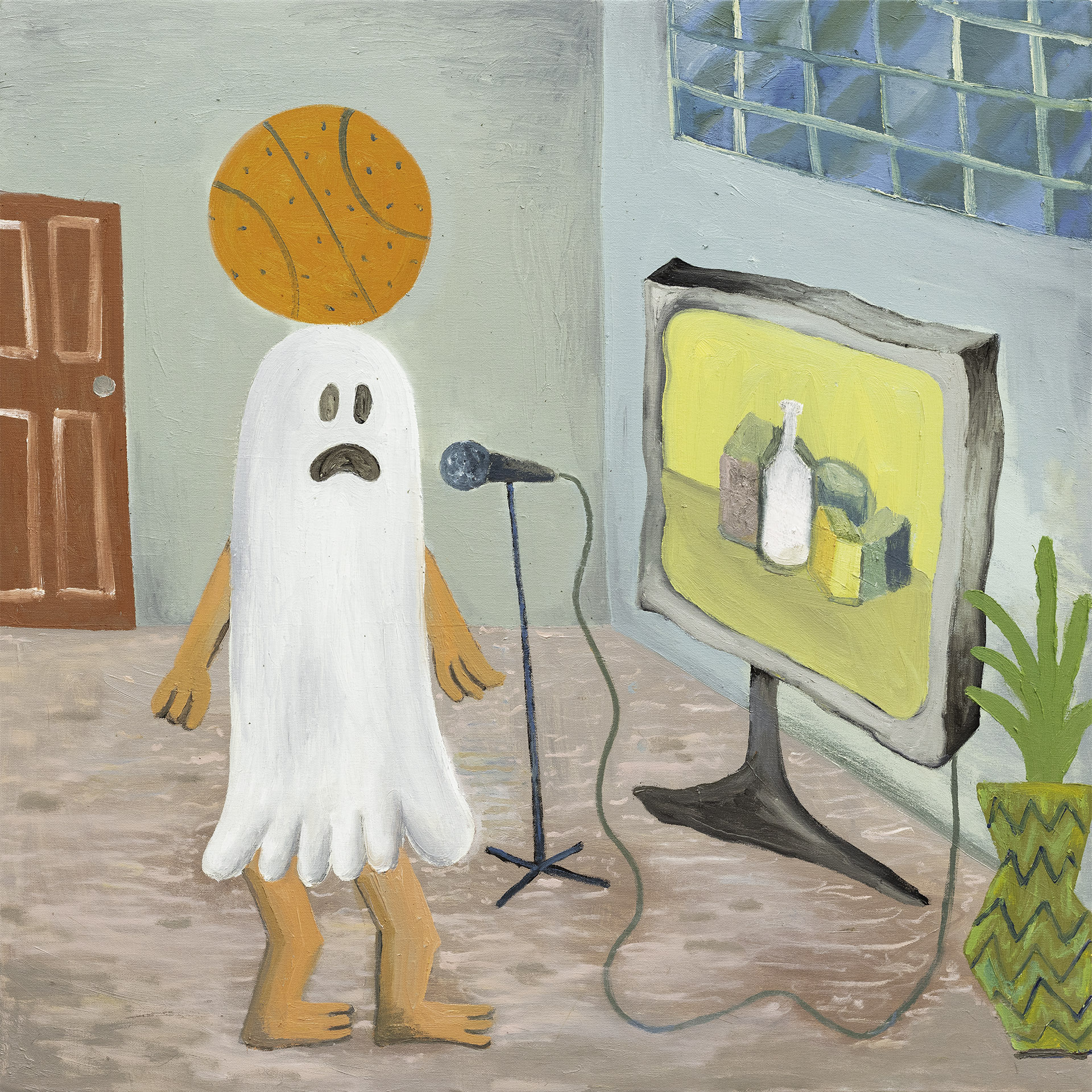
Inspired by movie tropes, pop culture, and the broader expanse of the online space, his cartoonish style combines the mundanities of everyday life with elements of pop culture. This results in a comically distorted and satirical portrait of American hard- and soft-power in the Philippines, social media, culture, and the art market.
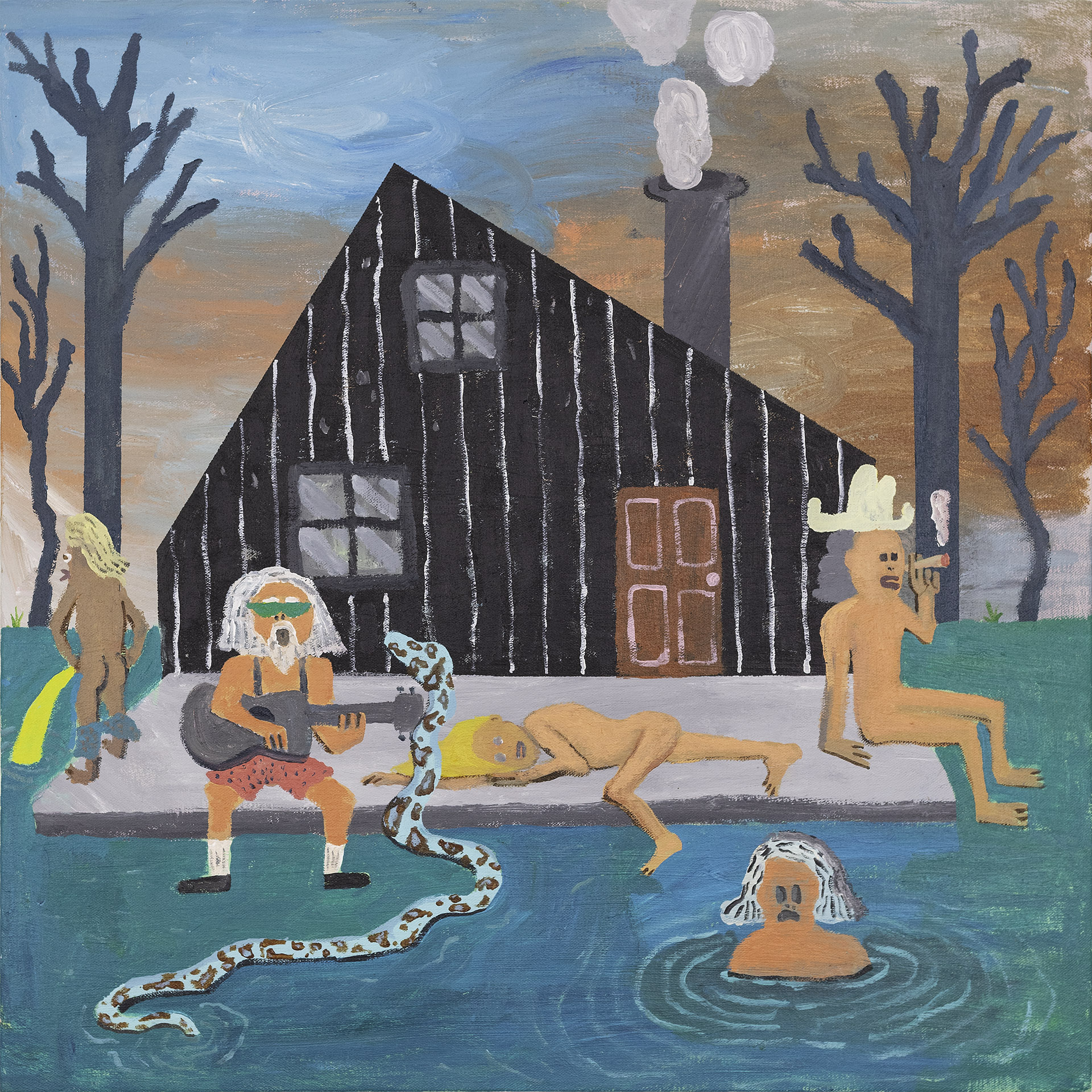
Inspired by movie tropes, pop culture, and the broader expanse of the online space, his cartoonish style combines the mundanities of everyday life with elements of pop culture. This results in a comically distorted and satirical portrait of American hard- and soft-power in the Philippines, social media, culture, and the art market.
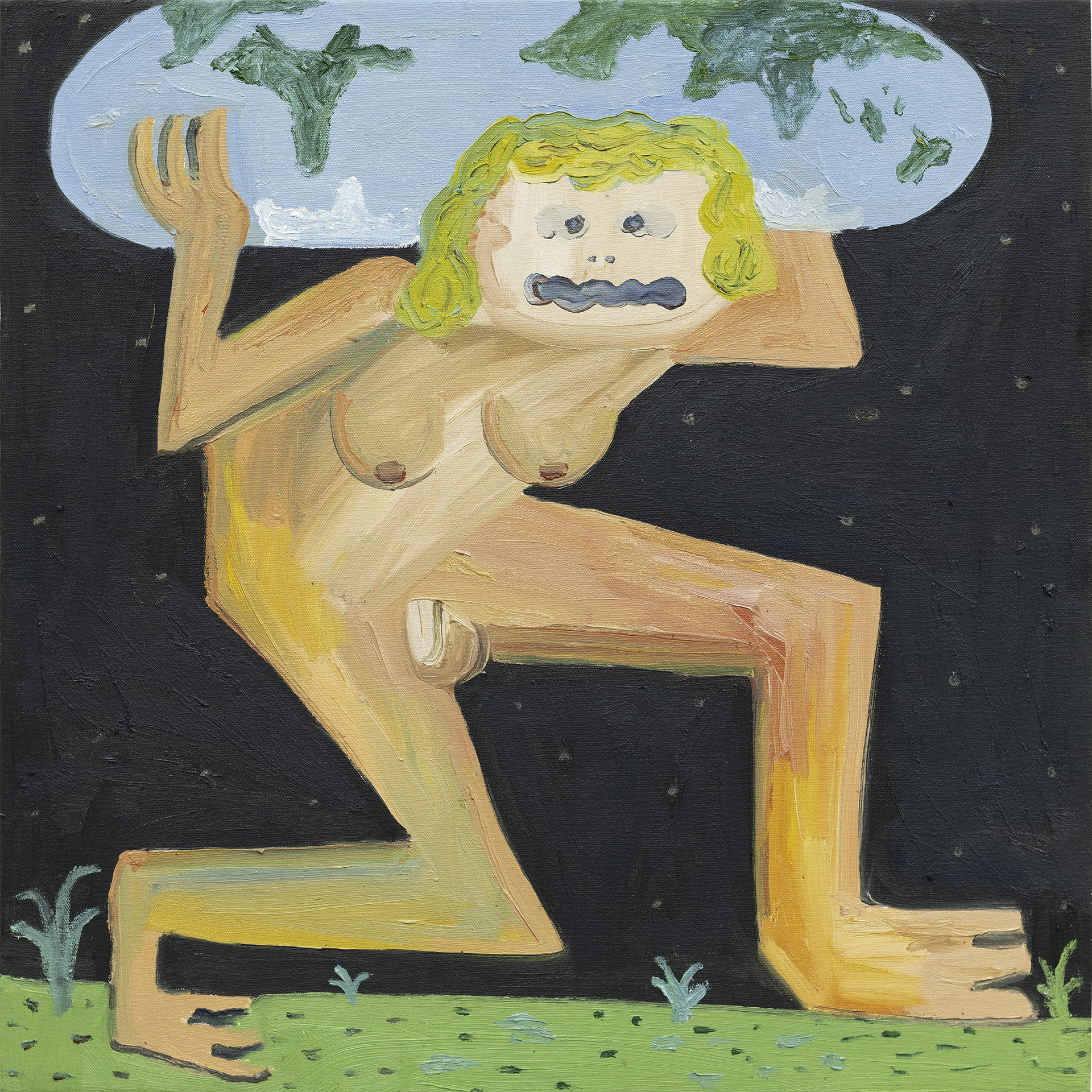
Inspired by movie tropes, pop culture, and the broader expanse of the online space, his cartoonish style combines the mundanities of everyday life with elements of pop culture. This results in a comically distorted and satirical portrait of American hard- and soft-power in the Philippines, social media, culture, and the art market.

Wawi Navarroza’s Mouth of Pearls is a humorous nod to the way that the Philippines are referred to as the ‘pearl of the orient’, along with many other Asian countries. Pearls, orchids and silk kaftan are culturally specific signifiers of exoticism, which Navarroza co-opts from the West’s harmful discourses and annexes to deconstruct their meanings. Wawi combines discourses of exocticism, colonization, and migration in her self portraits, challenging the conventional and destructive meanings of the Other, nature, women, and excess.

In this series of drawings, Basco uses oil and pigment to create a physical and emotional compositions of her own moving figure. The drawings emerge from the artist's attempts to transcribe her improvisational movement based practice. Employing hues of blue reminiscent of the early photographic technique, cyanotypes, Basco submerges herself to evoke a sense of motion and bodily intimacy.

In Todo Lo Que Tengo / Bottomless / Bereket (Self-Portrait with Vessels), Navarroza digitally edits herself to hold fragments of vessels from cultures of the ancient world, such as contemporary Philippines and Turkey. These vessels, traditionally symbolic of women, are rendered over one another, indicating the artist’s own cultural multiplicity. The Spanish title, translating to ‘Everything I have’, coupled with her embrace and contemplative profile, questions her body language in relation to the objects she holds: do the vessels contain liquid, or child?
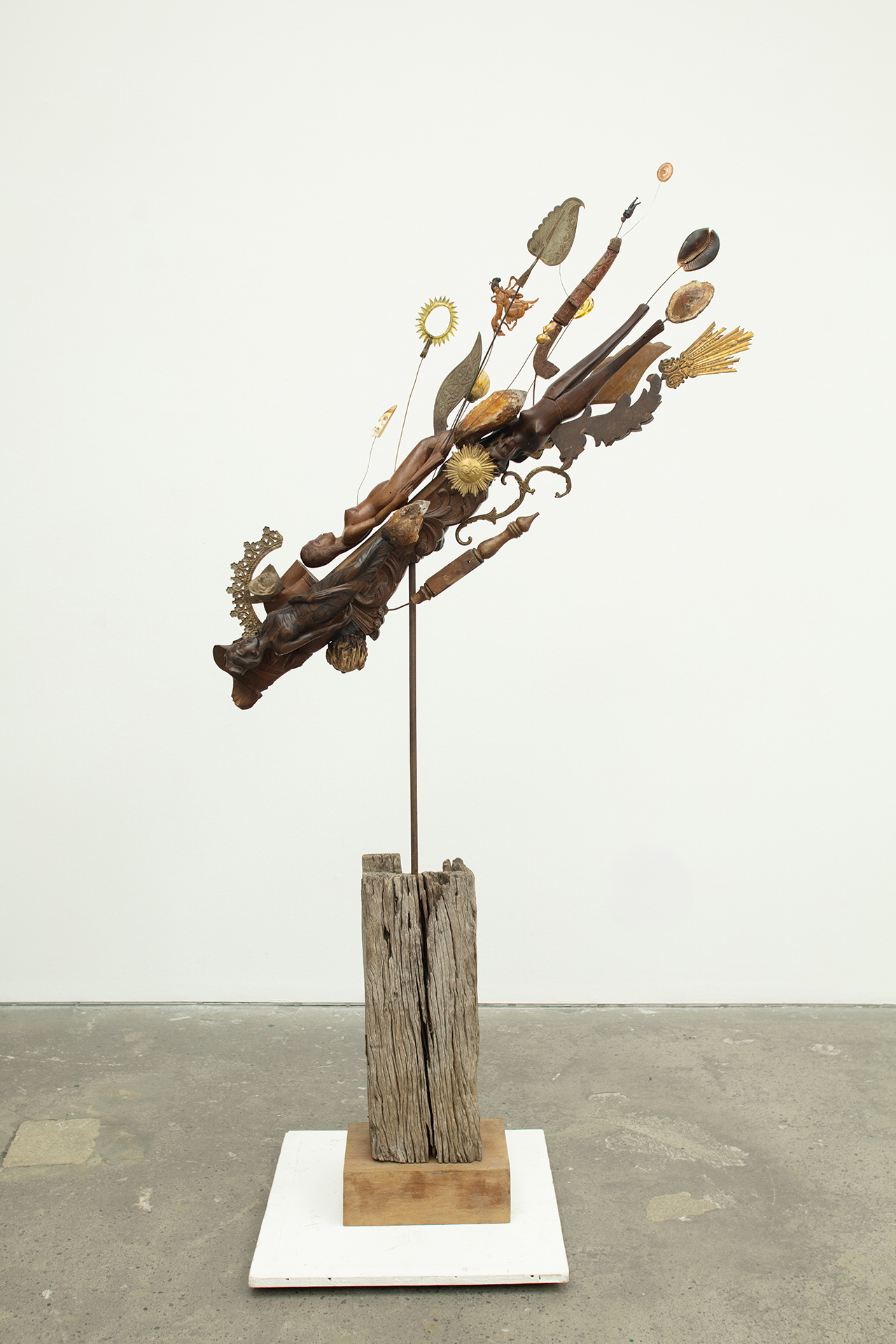
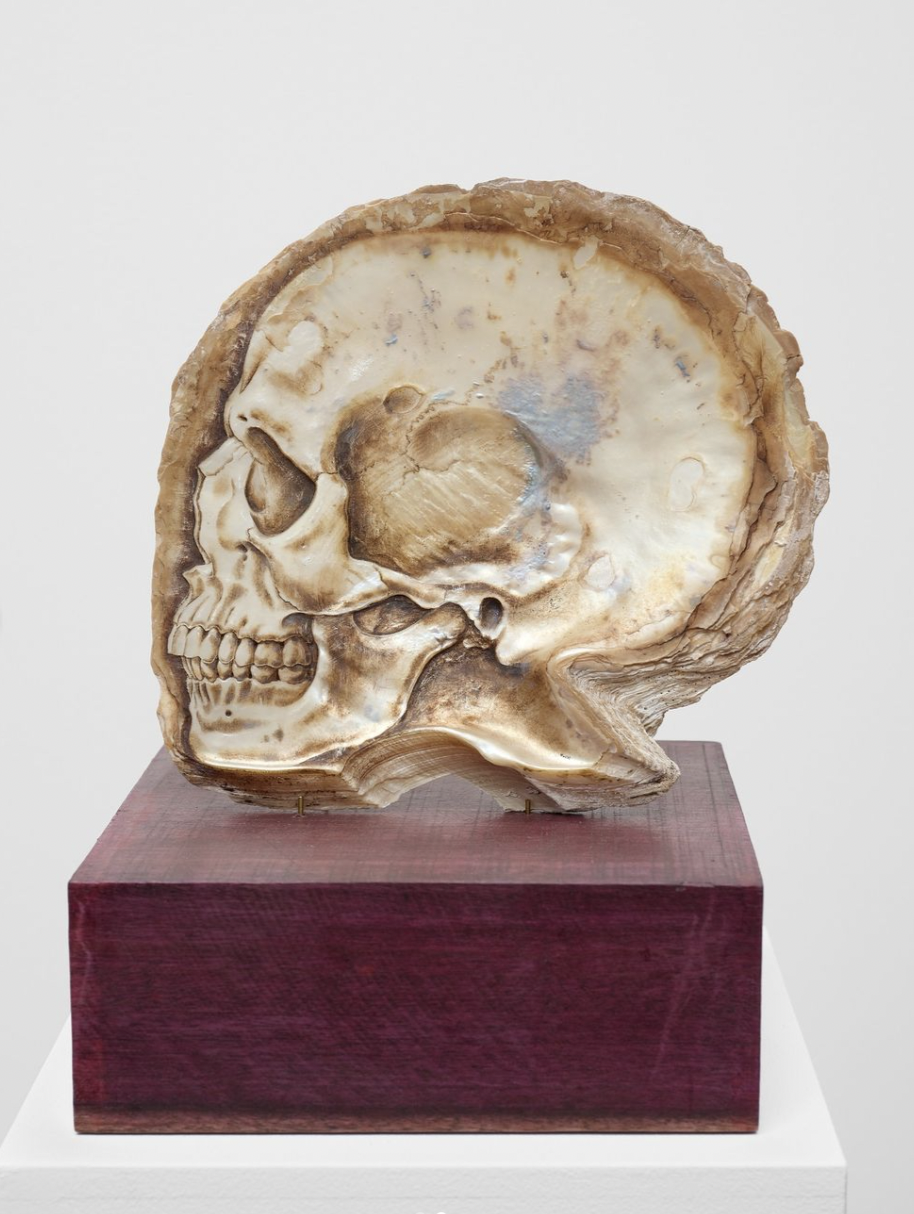
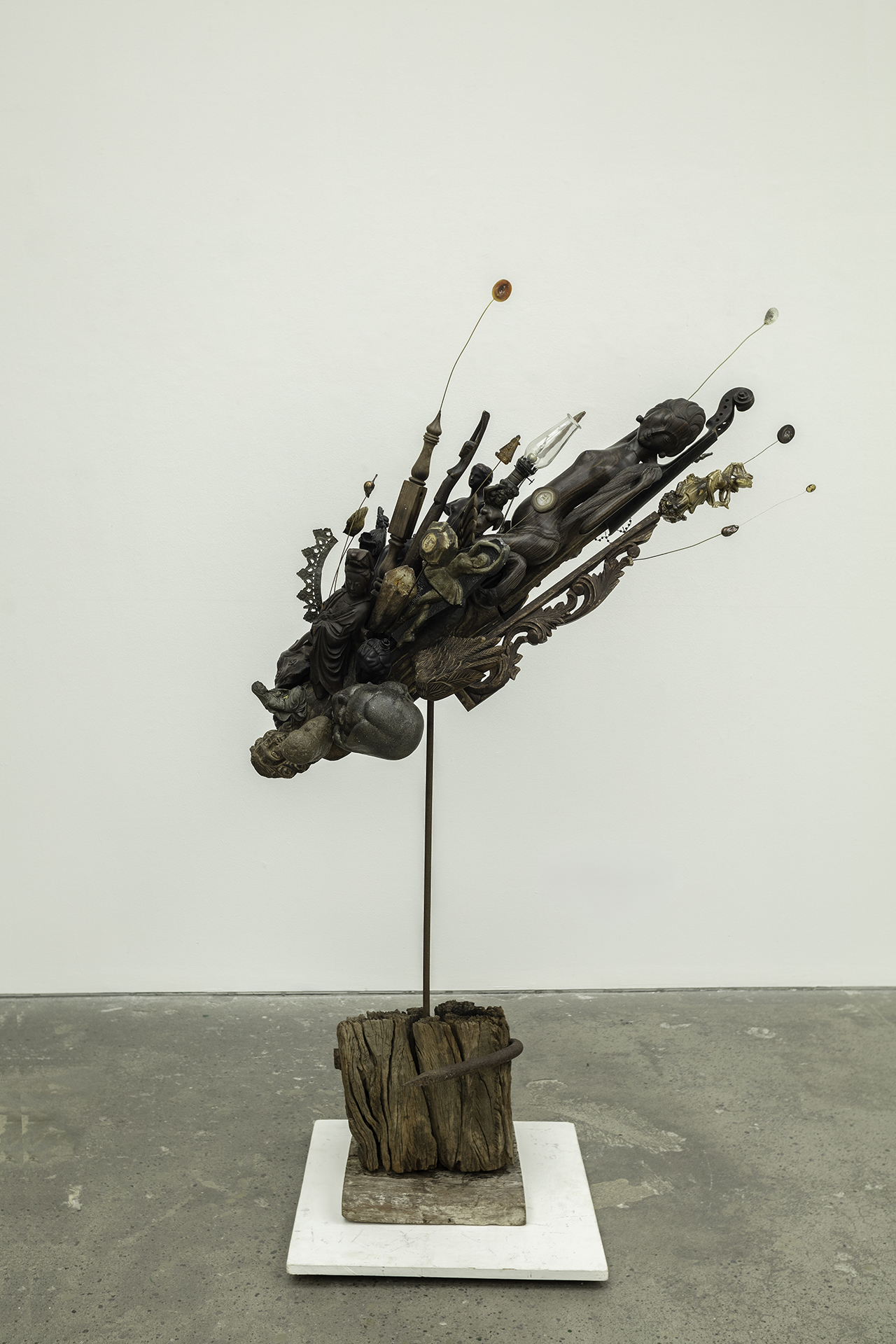
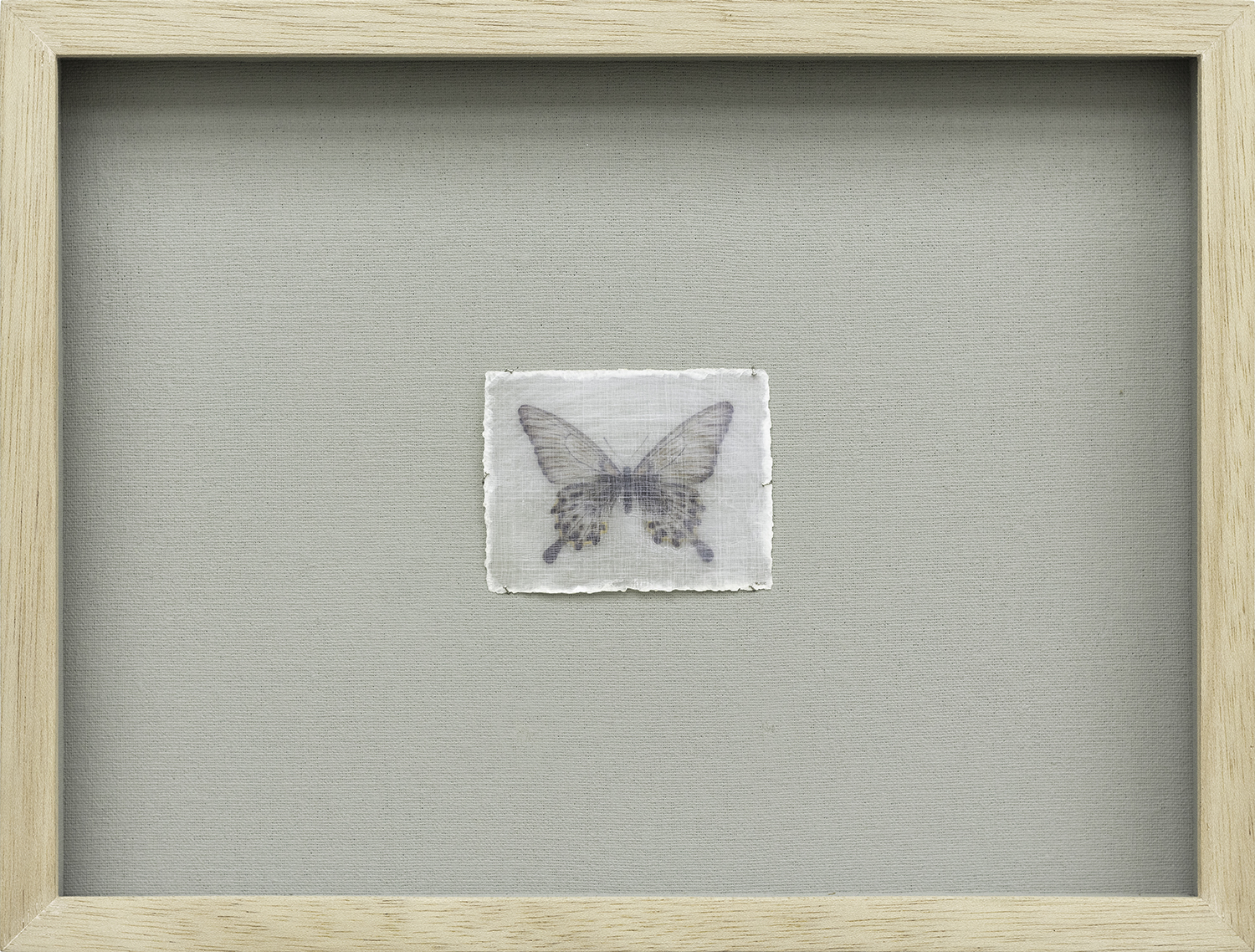

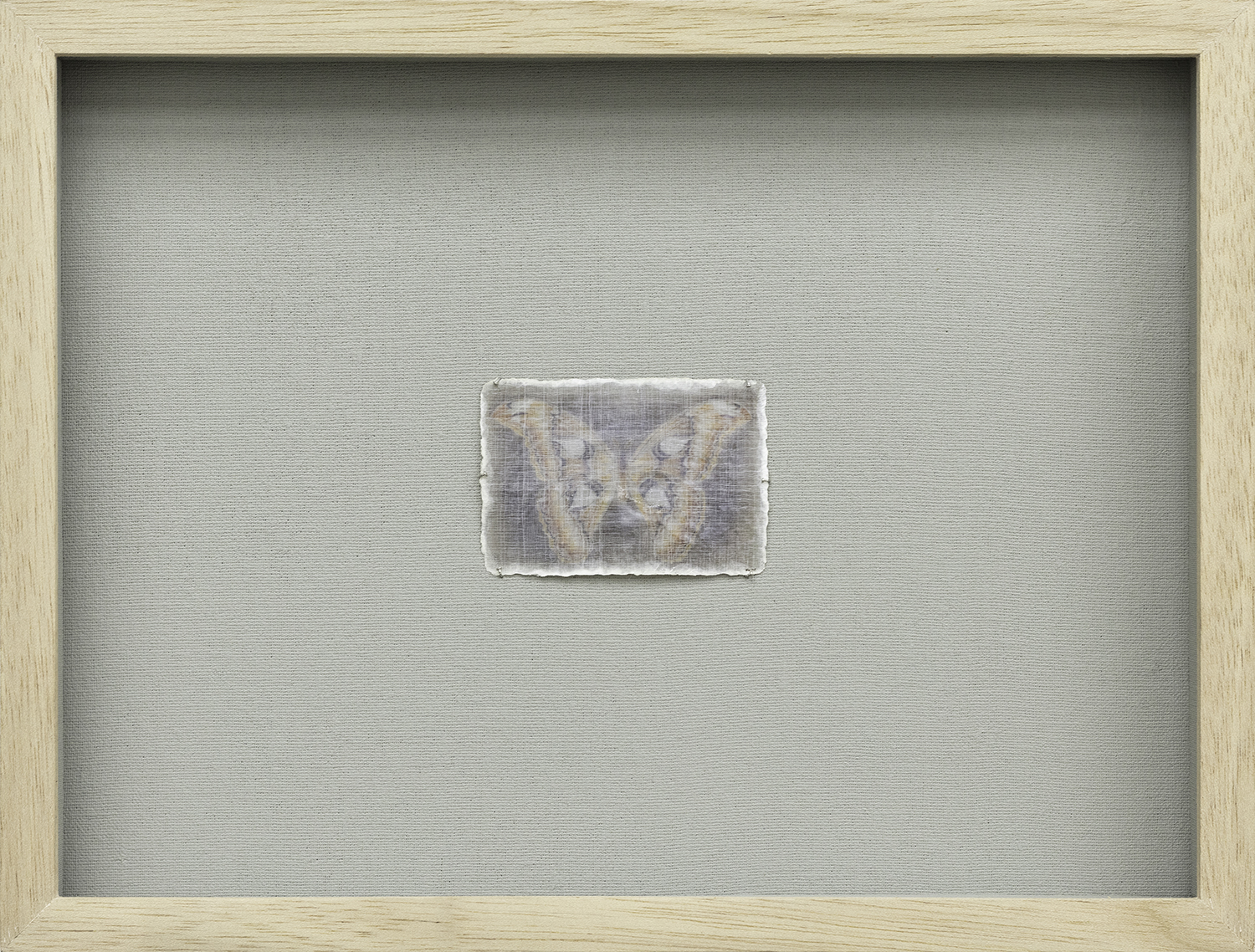

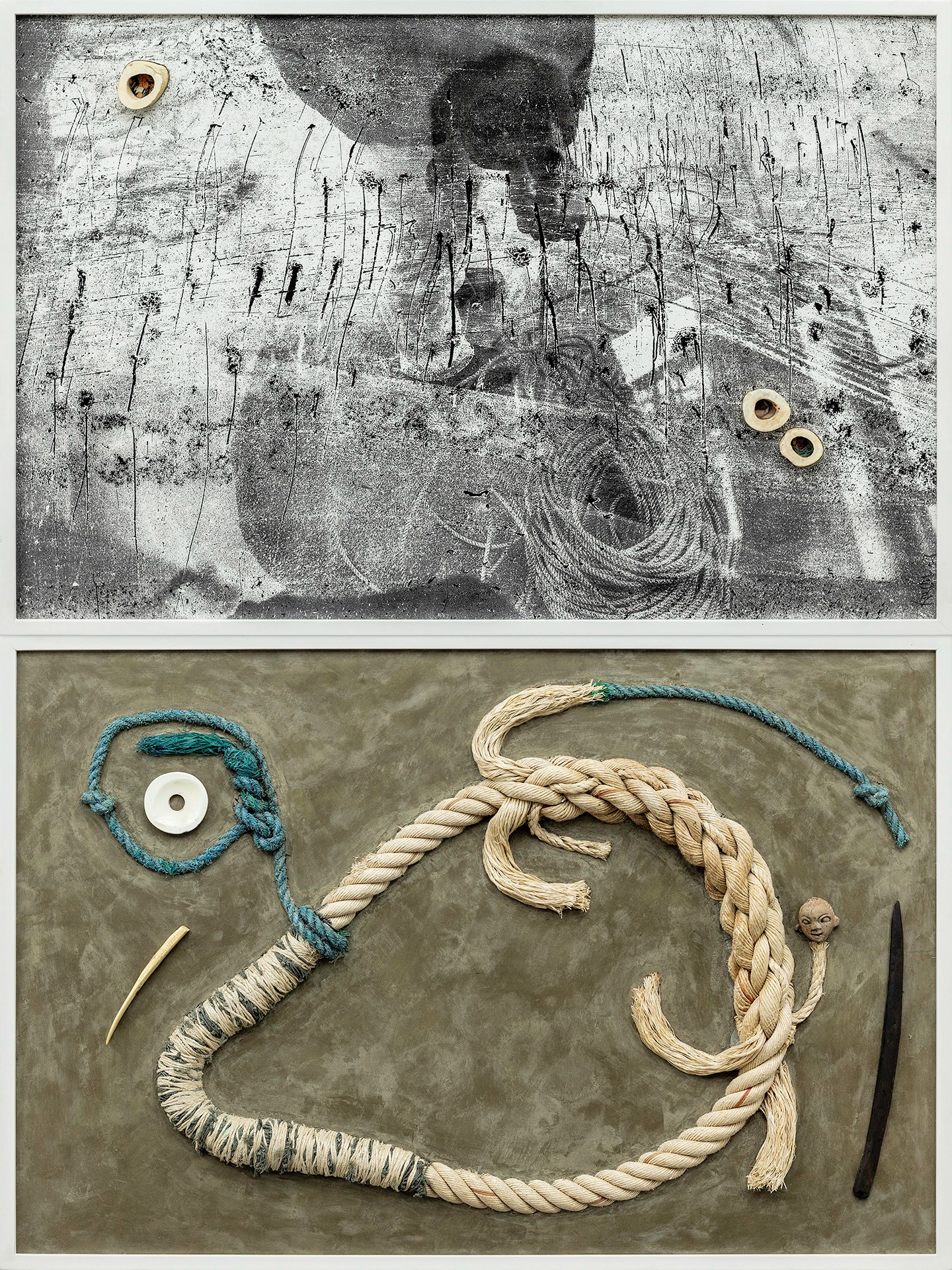
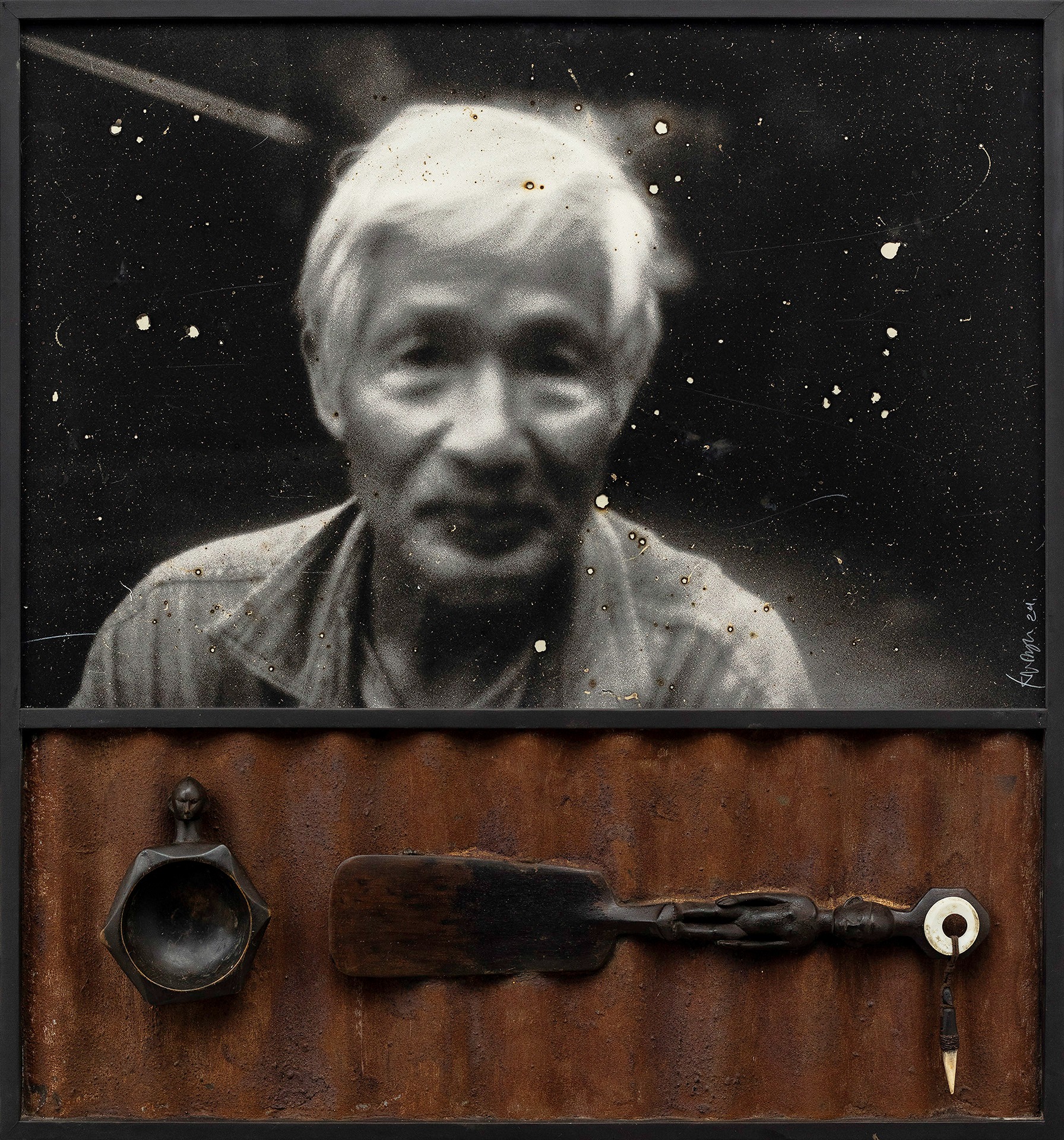
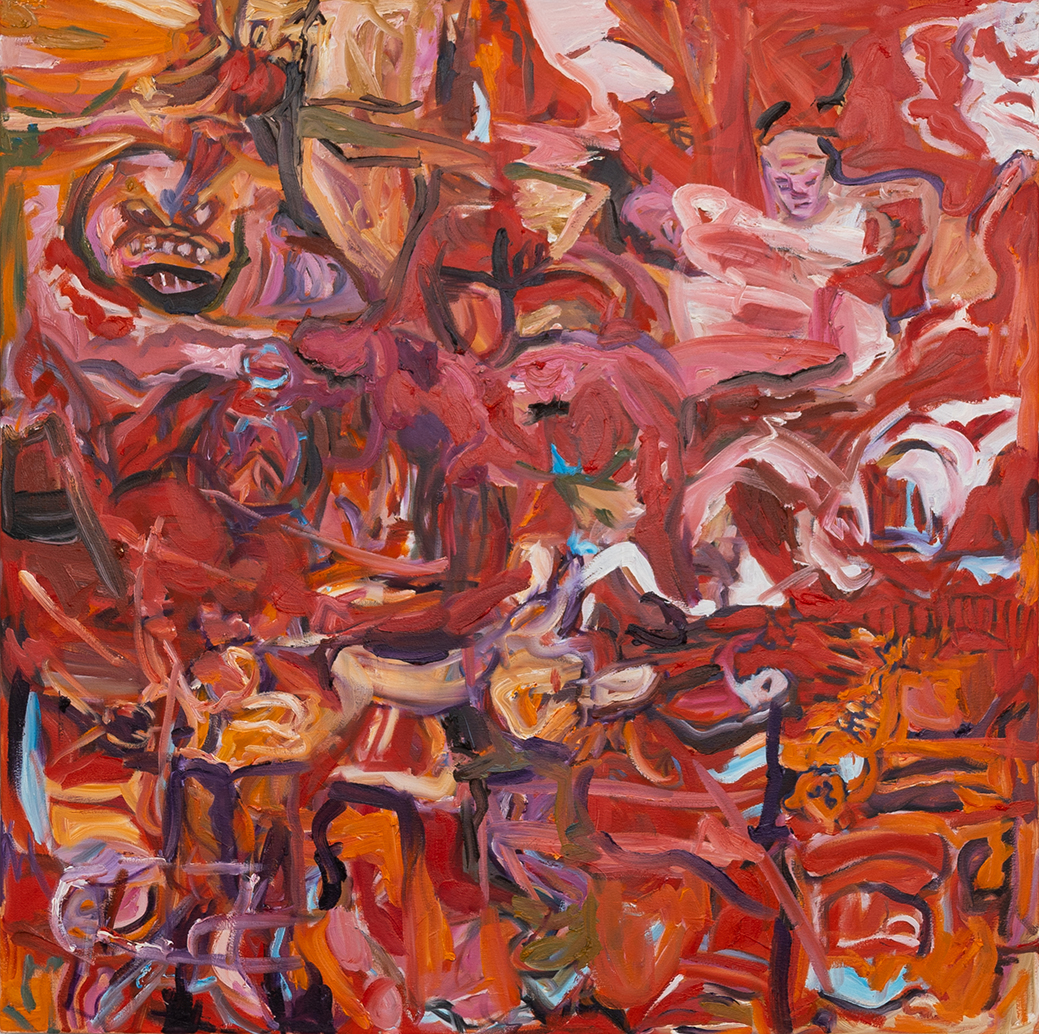
As a Filipino diasporic artist, Enriquez portrays Western interiors, critiquing mass media’s normative ideals. Appropriating a Neo-Expressionist style, she disrupts institutionalized conventions of gender, race, and citizenship, embracing a transcultural subjectivity to reveal alternative perspectives within her paintings. This series showcases her evolved style, which remains tactile, sensuous, bold, with a newfound sense of looseness and freedom.

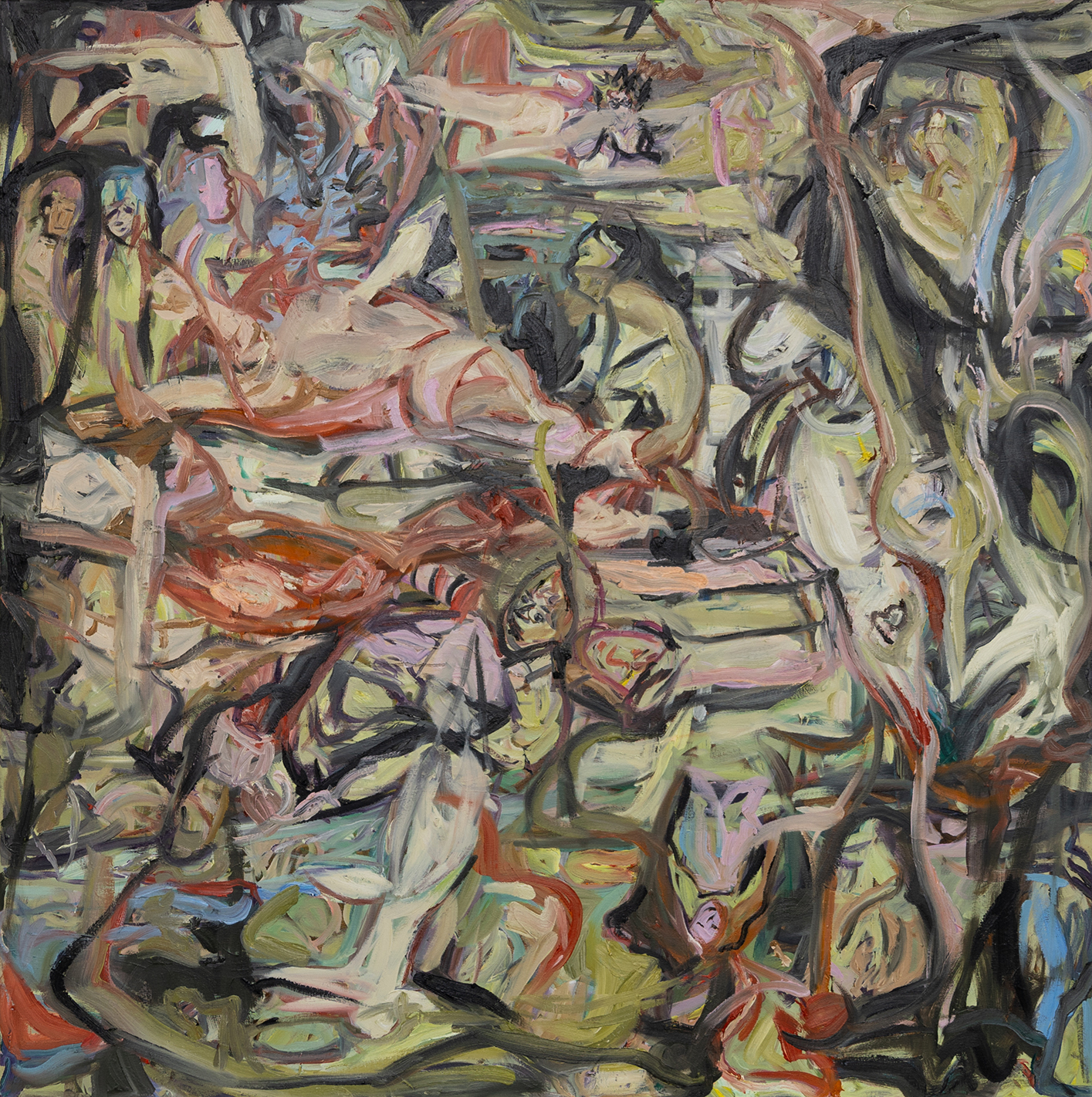
As a Filipino diasporic artist, Enriquez portrays Western interiors, critiquing mass media’s normative ideals. Appropriating a Neo-Expressionist style, she disrupts institutionalized conventions of gender, race, and citizenship, embracing a transcultural subjectivity to reveal alternative perspectives within her paintings. This series showcases her evolved style, which remains tactile, sensuous, bold, with a newfound sense of looseness and freedom.
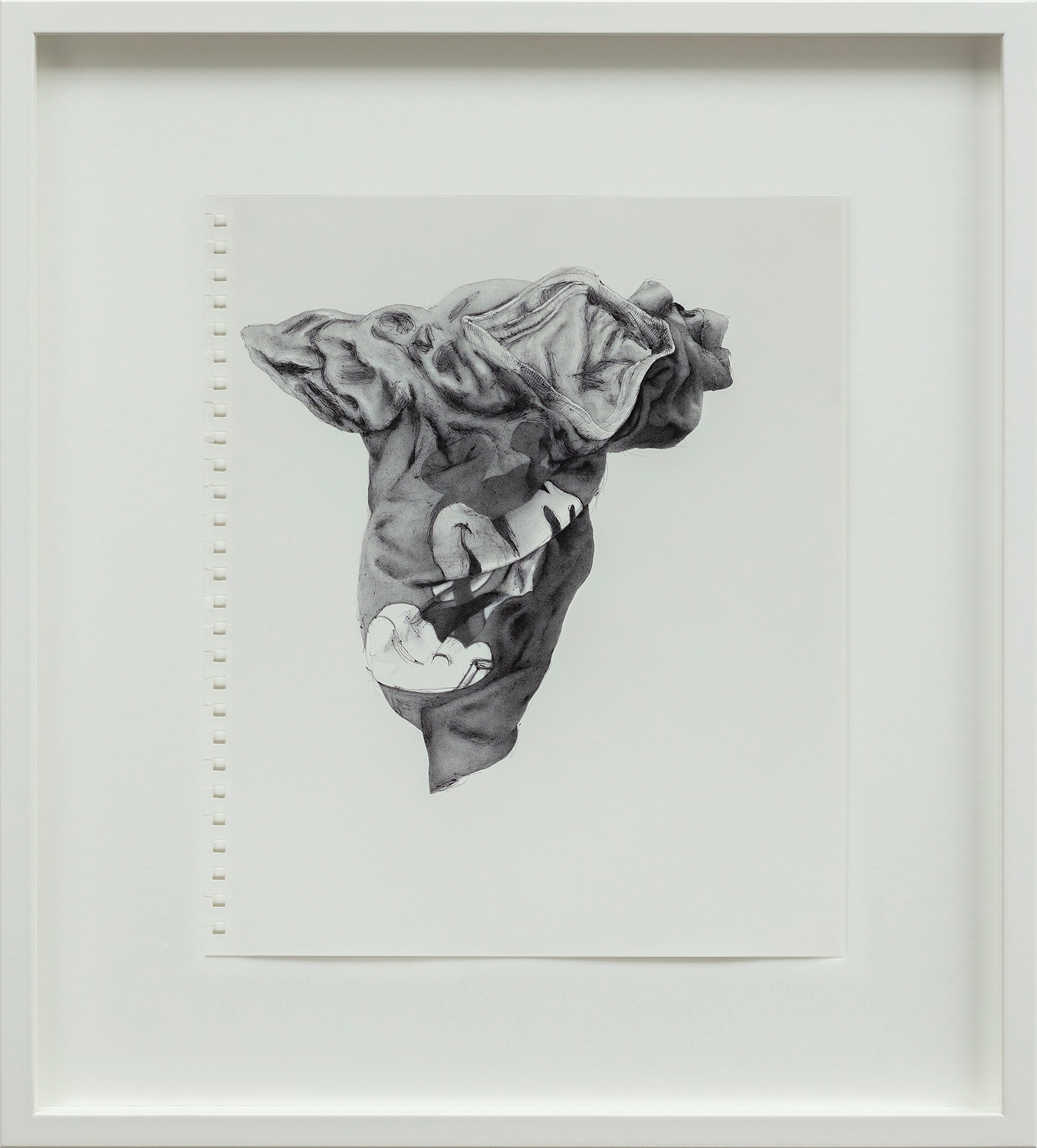
Renato Orara’s seemingly literal hyper-realistic ballpoint pen drawings obfuscate the artist’s conceptual roots in intervention-based and public performance art in 1970s Manila. When returning to his practice in 1989 after an eight-year Zen meditation, Orara turned to pen and paper, filling blank pages with everyday objects. In isolating them from any context, meaning, or narrative and layering them with ink, the drawings ceased to be objects, surpassing the limits imposed by material constraints.
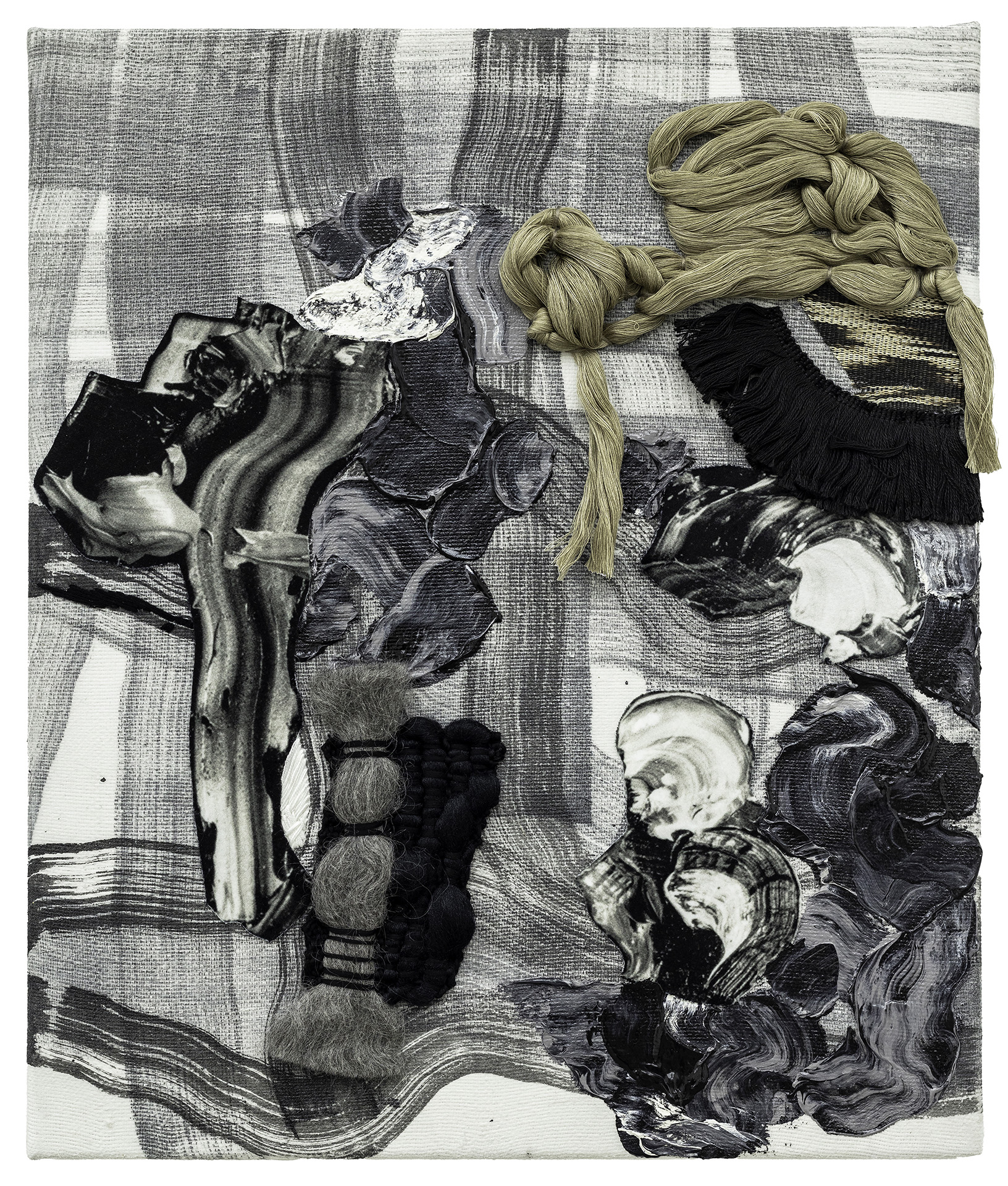
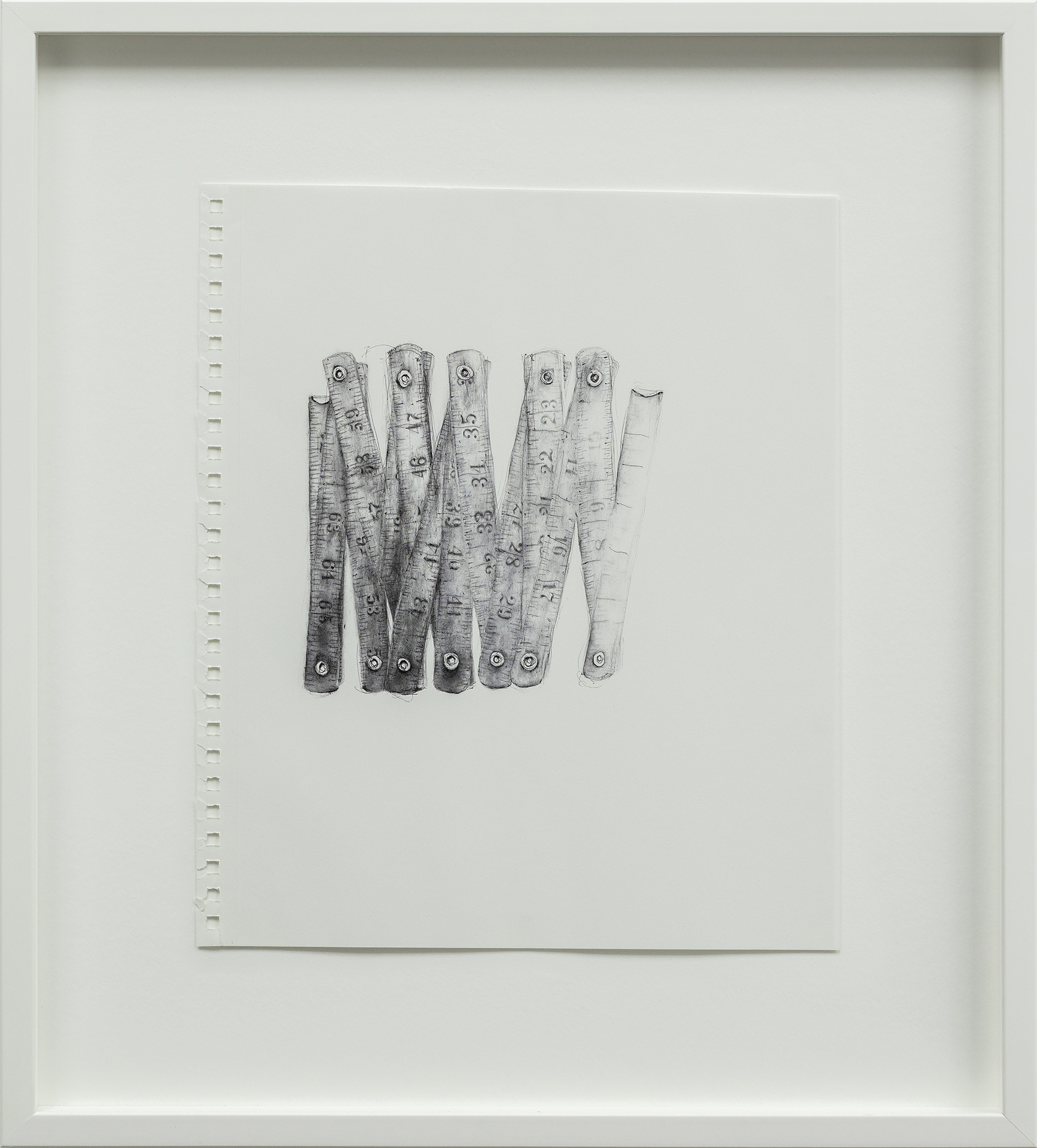
Renato Orara’s seemingly literal hyper-realistic ballpoint pen drawings obfuscate the artist’s conceptual roots in intervention-based and public performance art in 1970s Manila. When returning to his practice in 1989 after an eight-year Zen meditation, Orara turned to pen and paper, filling blank pages with everyday objects. In isolating them from any context, meaning, or narrative and layering them with ink, the drawings ceased to be objects, surpassing the limits imposed by material constraints.
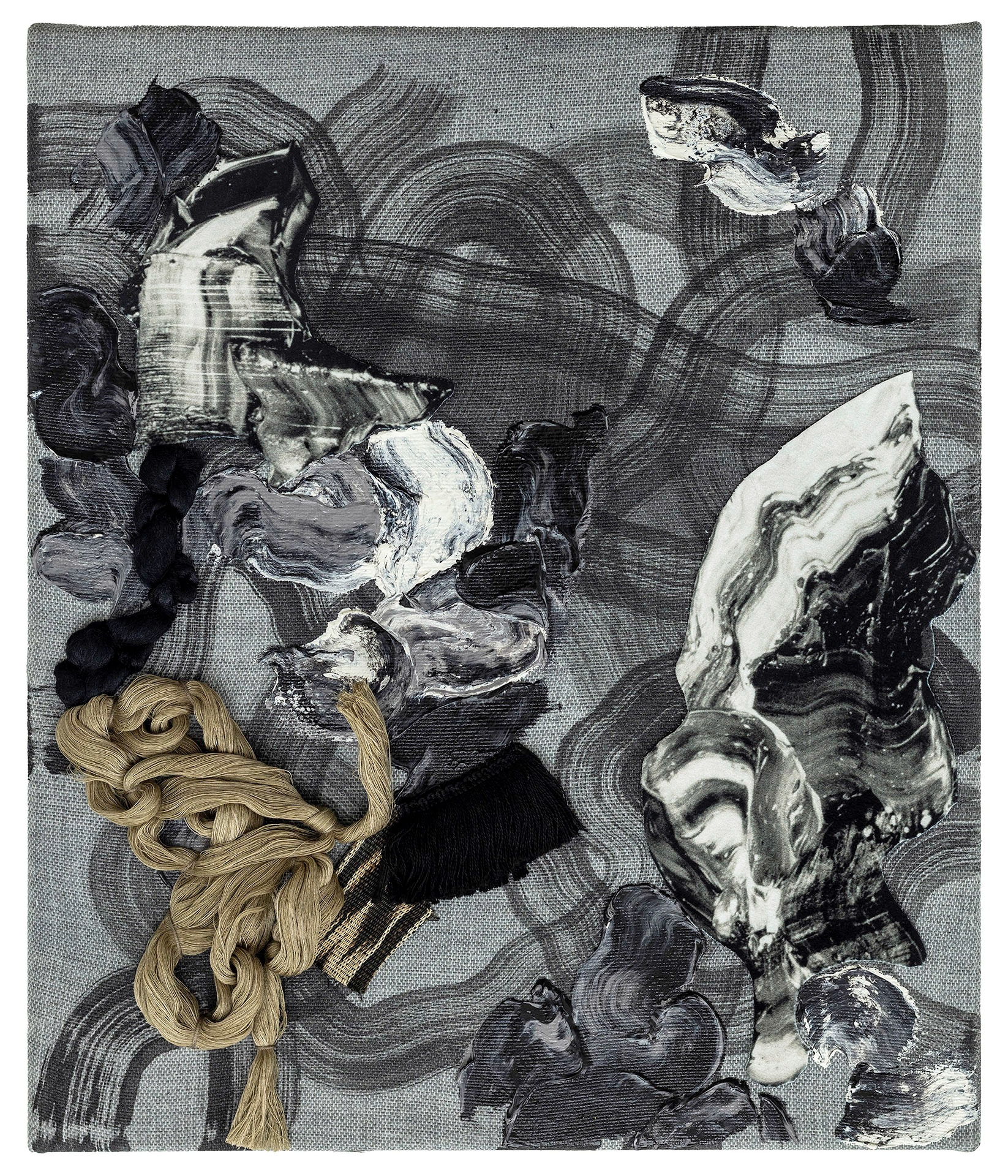
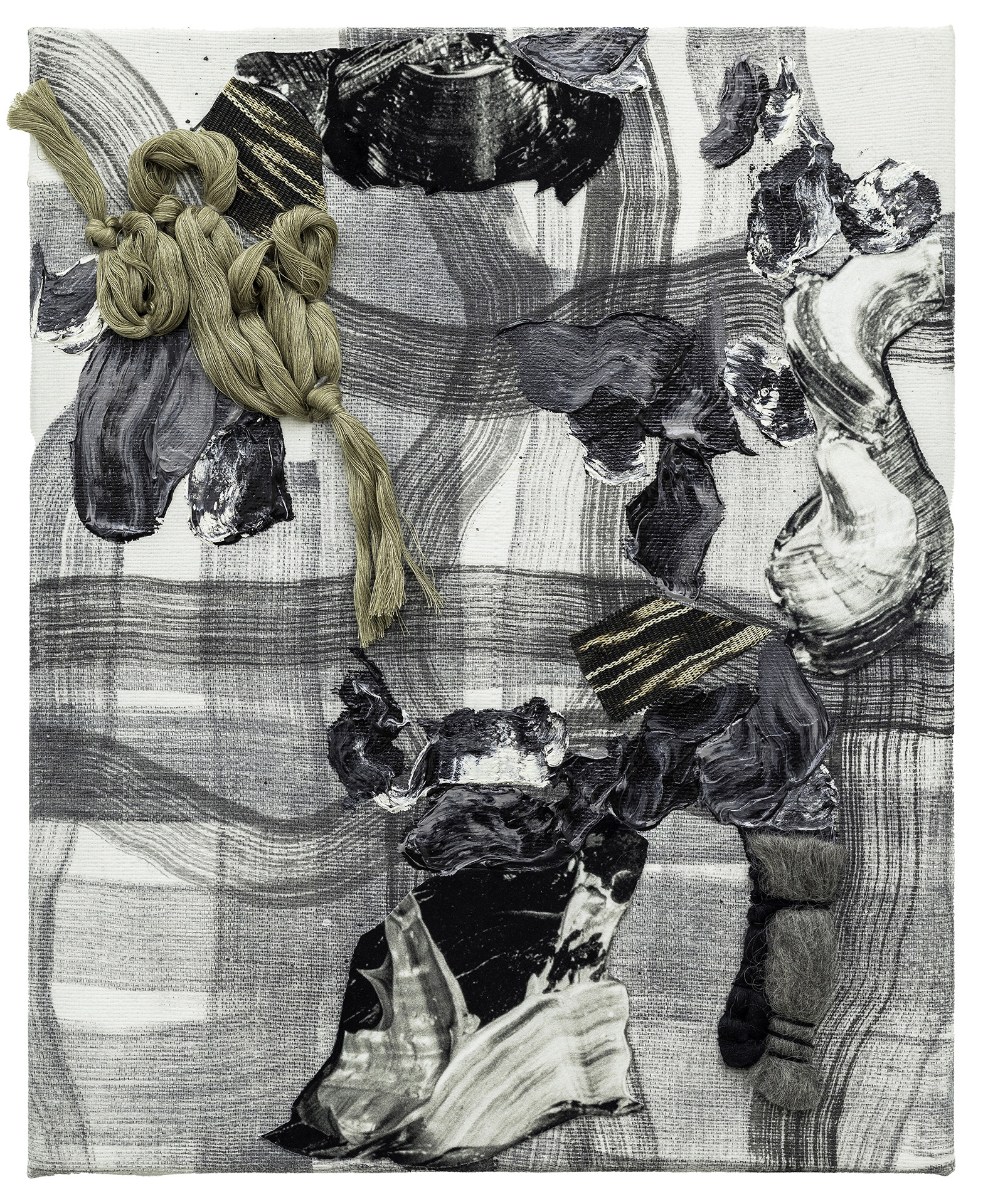
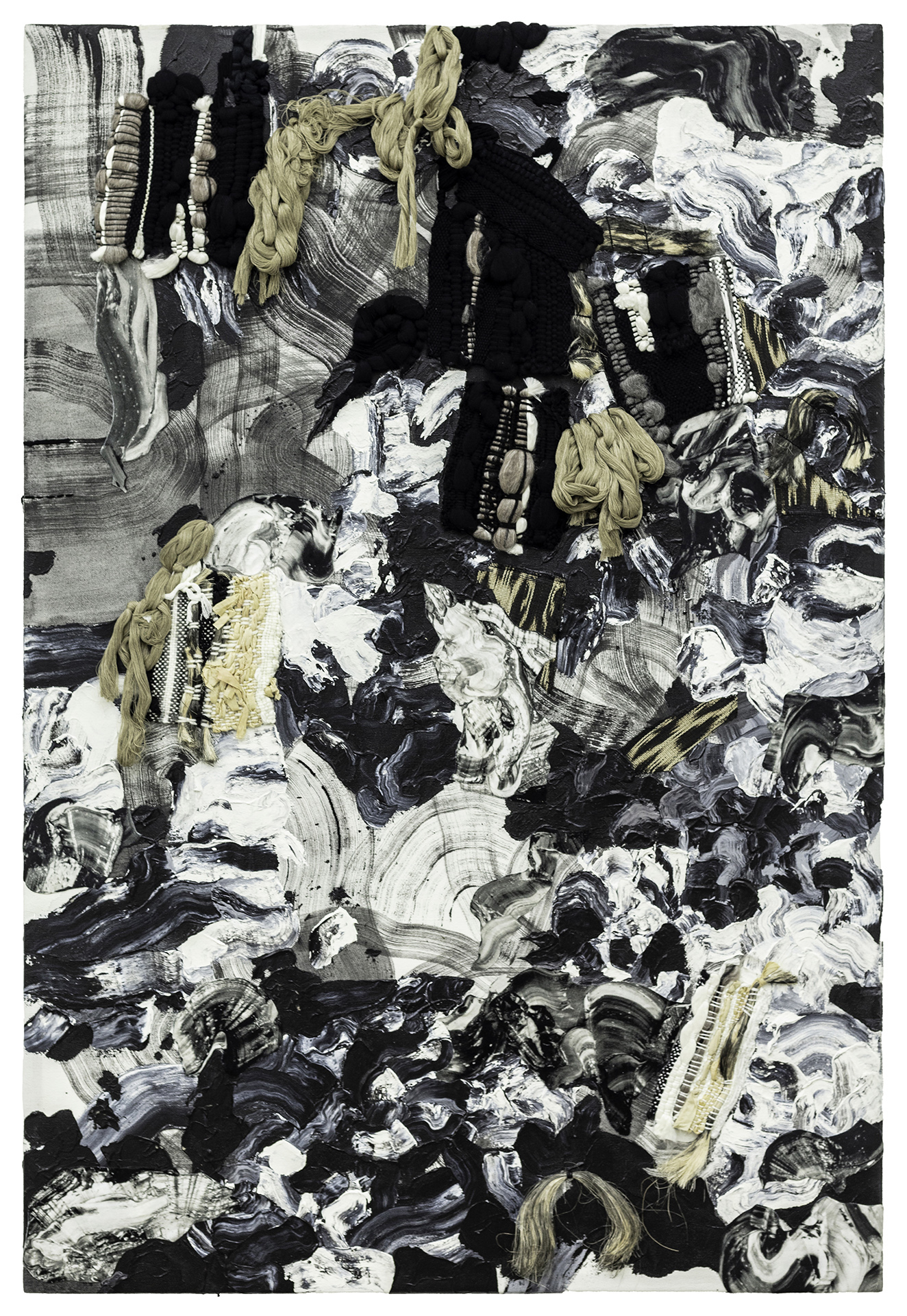

Mit Jai Inn’s oeuvre serves as a conversation between all things physical — light, color, and labor — and how they weave themselves into metaphysical, political, and social constructions of power and belief. His works are a tactile experience; each piece meant to be walked through, felt, sometimes even touched, thus, pulling you into the gradient of his Dreamworld.

From his open air mountain studio, Mit creates kaleidoscopic paintings while in a trance-like state. Mit layers, scrapes, and blends colors thickly with palette knives or his hands, mixing in materials such as cement, sand, and sawdust. The result are complex hybrid objects: both paintings that could be considered sculptures, and sculptures that incorporate painterly techniques.
Mit Jai Inn’s oeuvre serves as a conversation between all things physical — light, color, and labor — and how they weave themselves into metaphysical, political, and social constructions of power and belief. His works are a tactile experience; each piece meant to be walked through, felt, sometimes even touched, thus, pulling you into the gradient of his Dreamworld.

The quilt-like pattern of Untitled, 2015 mimics lowland paddy’s varied rectilinear plots. In many sects of Buddhism, the rice-field is considered the original merit-field, where seeds offered to fertile ground create abundant harvest. Simultaneously, the structure refers to Buddhist monk’s robes which, historically made from donated fabric remnants. Bringing together these references, the artist considers powerful spaces to share and mobilize resistance.

The quilt-like pattern of Untitled, 2004 mimics lowland paddy’s varied rectilinear plots. In many sects of Buddhism, the rice-field is considered the original merit-field, where seeds offered to fertile ground create abundant harvest. Simultaneously, the structure refers to Buddhist monk’s robes which, historically made from donated fabric remnants. Bringing together these references, the artist considers powerful spaces to share and mobilize resistance.

The quilt-like pattern of Untitled, 2004 mimics lowland paddy’s varied rectilinear plots. In many sects of Buddhism, the rice-field is considered the original merit-field, where seeds offered to fertile ground create abundant harvest. Simultaneously, the structure refers to Buddhist monk’s robes which, historically made from donated fabric remnants. Bringing together these references, the artist considers powerful spaces to share and mobilize resistance.

The quilt-like pattern of Untitled, 2004 mimics lowland paddy’s varied rectilinear plots. In many sects of Buddhism, the rice-field is considered the original merit-field, where seeds offered to fertile ground create abundant harvest. Simultaneously, the structure refers to Buddhist monk’s robes which, historically made from donated fabric remnants. Bringing together these references, the artist considers powerful spaces to share and mobilize resistance.

At the center of Mit Jai Inn’s (b. 1960, Buak Khang, Thailand; lives and works in Chiang Mai, Thailand) practice is the ritual creation of sovereign spaces, inspired by the egalitarian principles of Buddhism. Navigating carefully under the strict censorship of Thailand, Mit abstracts public forms and color from the temple, the political protest, the village, and market life.

At the center of Mit Jai Inn’s (b. 1960, Buak Khang, Thailand; lives and works in Chiang Mai, Thailand) practice is the ritual creation of sovereign spaces, inspired by the egalitarian principles of Buddhism. Navigating carefully under the strict censorship of Thailand, Mit abstracts public forms and color from the temple, the political protest, the village, and market life.

At the center of Mit Jai Inn’s (b. 1960, Buak Khang, Thailand; lives and works in Chiang Mai, Thailand) practice is the ritual creation of sovereign spaces, inspired by the egalitarian principles of Buddhism. Navigating carefully under the strict censorship of Thailand, Mit abstracts public forms and color from the temple, the political protest, the village, and market life.

At the center of Mit Jai Inn’s (b. 1960, Buak Khang, Thailand; lives and works in Chiang Mai, Thailand) practice is the ritual creation of sovereign spaces, inspired by the egalitarian principles of Buddhism. Navigating carefully under the strict censorship of Thailand, Mit abstracts public forms and color from the temple, the political protest, the village, and market life.

At the center of Mit Jai Inn’s (b. 1960, Buak Khang, Thailand; lives and works in Chiang Mai, Thailand) practice is the ritual creation of sovereign spaces, inspired by the egalitarian principles of Buddhism. Navigating carefully under the strict censorship of Thailand, Mit abstracts public forms and color from the temple, the political protest, the village, and market life.

At the center of Mit Jai Inn’s (b. 1960, Buak Khang, Thailand; lives and works in Chiang Mai, Thailand) practice is the ritual creation of sovereign spaces, inspired by the egalitarian principles of Buddhism. Navigating carefully under the strict censorship of Thailand, Mit abstracts public forms and color from the temple, the political protest, the village, and market life.

At the center of Mit Jai Inn’s (b. 1960, Buak Khang, Thailand; lives and works in Chiang Mai, Thailand) practice is the ritual creation of sovereign spaces, inspired by the egalitarian principles of Buddhism. Navigating carefully under the strict censorship of Thailand, Mit abstracts public forms and color from the temple, the political protest, the village, and market life.

At the center of Mit Jai Inn’s (b. 1960, Buak Khang, Thailand; lives and works in Chiang Mai, Thailand) practice is the ritual creation of sovereign spaces, inspired by the egalitarian principles of Buddhism. Navigating carefully under the strict censorship of Thailand, Mit abstracts public forms and color from the temple, the political protest, the village, and market life.

At the center of Mit Jai Inn’s (b. 1960, Buak Khang, Thailand; lives and works in Chiang Mai, Thailand) practice is the ritual creation of sovereign spaces, inspired by the egalitarian principles of Buddhism. Navigating carefully under the strict censorship of Thailand, Mit abstracts public forms and color from the temple, the political protest, the village, and market life.

At the center of Mit Jai Inn’s (b. 1960, Buak Khang, Thailand; lives and works in Chiang Mai, Thailand) practice is the ritual creation of sovereign spaces, inspired by the egalitarian principles of Buddhism. Navigating carefully under the strict censorship of Thailand, Mit abstracts public forms and color from the temple, the political protest, the village, and market life.

At the center of Mit Jai Inn’s (b. 1960, Buak Khang, Thailand; lives and works in Chiang Mai, Thailand) practice is the ritual creation of sovereign spaces, inspired by the egalitarian principles of Buddhism. Navigating carefully under the strict censorship of Thailand, Mit abstracts public forms and color from the temple, the political protest, the village, and market life.

At the center of Mit Jai Inn’s (b. 1960, Buak Khang, Thailand; lives and works in Chiang Mai, Thailand) practice is the ritual creation of sovereign spaces, inspired by the egalitarian principles of Buddhism. Navigating carefully under the strict censorship of Thailand, Mit abstracts public forms and color from the temple, the political protest, the village, and market life.
